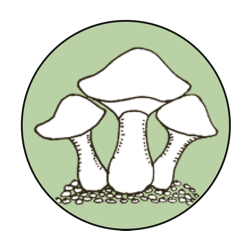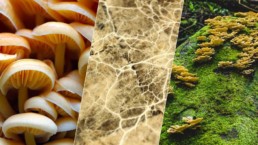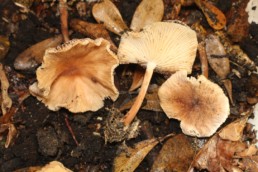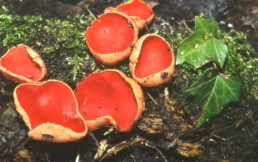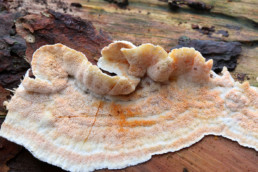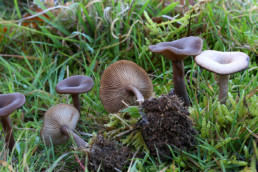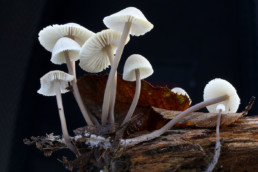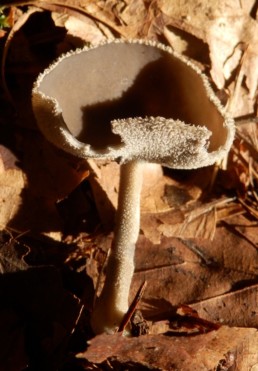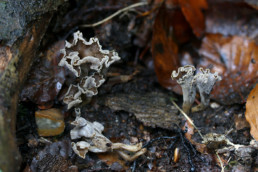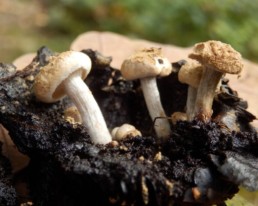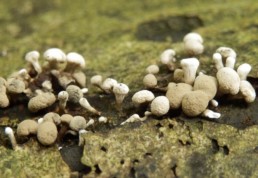Autumn programme
Members should have received our autumn programme. Meetings for September have been entered into the events calendar (on pc, calendar is bottom right of home page; on tablet / phone, scroll down to bottom). More to follow.
Tropical fungus in Beds?
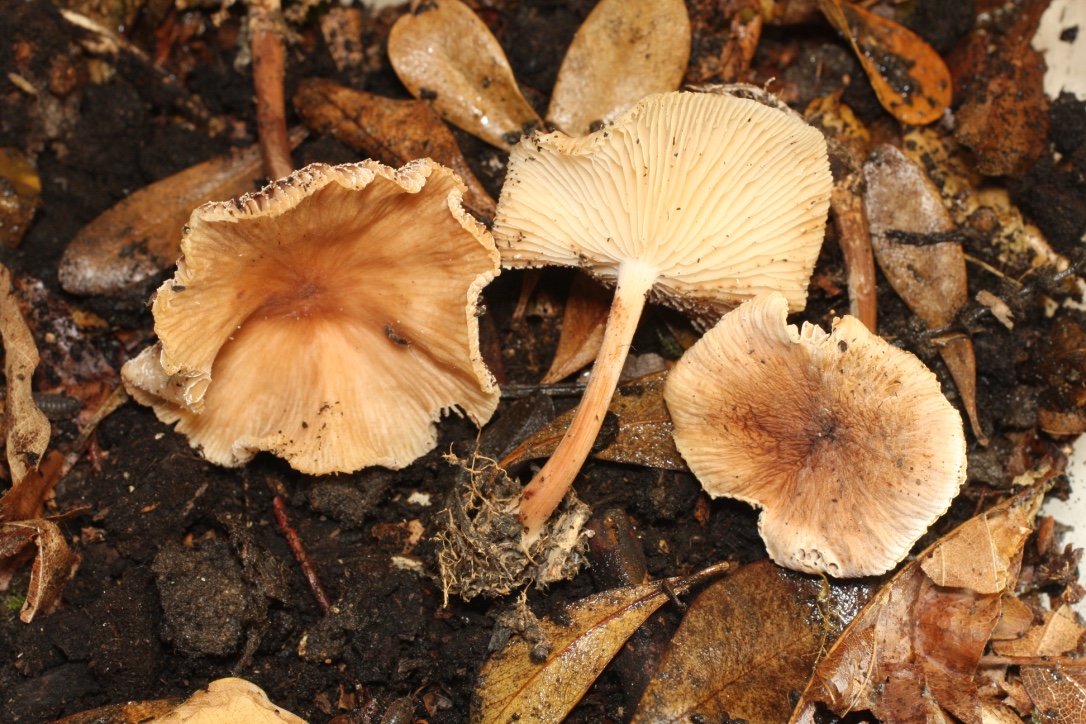
Last year Alan found a collybioid species in Whipsnade Zoo butterfly house which he tentatively identified with reservations as Gymnopus inodorus. Feeling that it was not quite right for that, he asked Geoffrey Kibby about it on the basis that Geoffrey might perhaps have seen something similar at Kew. Geoffrey responded “Your Gymnopus resembles a species which turns up at Kew regularly and which we have decided is a tropical species called G. multijuga. I will be writing this up as a profile fairly soon in Field Mycology so you can read about it there”. It is, of course, new for Beds.
Scarlet elf cup time
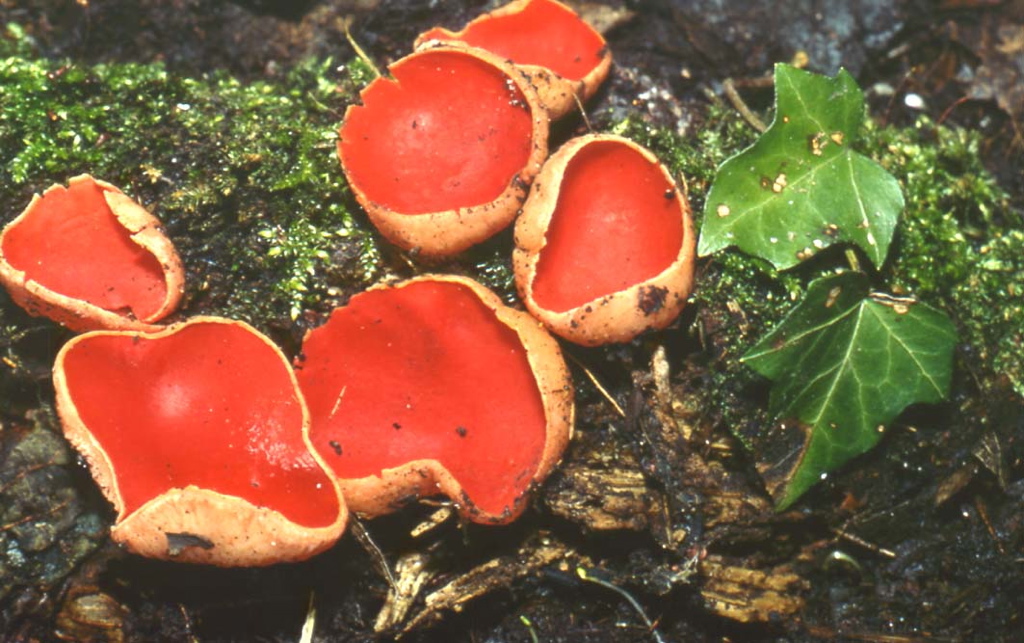
Sarcoscypha austriaca can be found at any time between November and April. It likes wet conditions and especially alder/willow carr and is apparently not worried by snow or frost. This photo was taken some years back by Alan Outen at Oughton Head, Herts.
Interesting corticioid worth looking for on conifer wood
Skeletocutis amorpha on an old conifer log at Stockgrove Park. From the top, this looked unremarkable, rather like a Turkeytail (Trametes versicolor) but underneath the pores bruised a striking orange. The Basidio checklist says “Common and widespread. Easily recognised especially if the pore surface has developed the distinctive apricot-orange colouration”, and I am thinking I have probably overlooked it many a time, mistaking it for Trametes; so worth looking carefully at any small brackets on a fallen conifer.
Sign of winter
We found my very favourite fungus at Waterford Heath on 26 November – The Goblet (Pseudoclitocybe cyathiformis), a beautiful, elegant speciality of late autumn/winter; photo by Claudi.
Angels bonnets
We found a pretty little Mycena, M. arcangeliana (Angels bonnet) at Heartwood Forest a couple of weeks ago. This fungus sometimes has a slight yellow-green look to the cap (not visible in these specimens), but the characteristic hint of violet in the stipe is apparent. Photo by Claudi.
Felt saddle
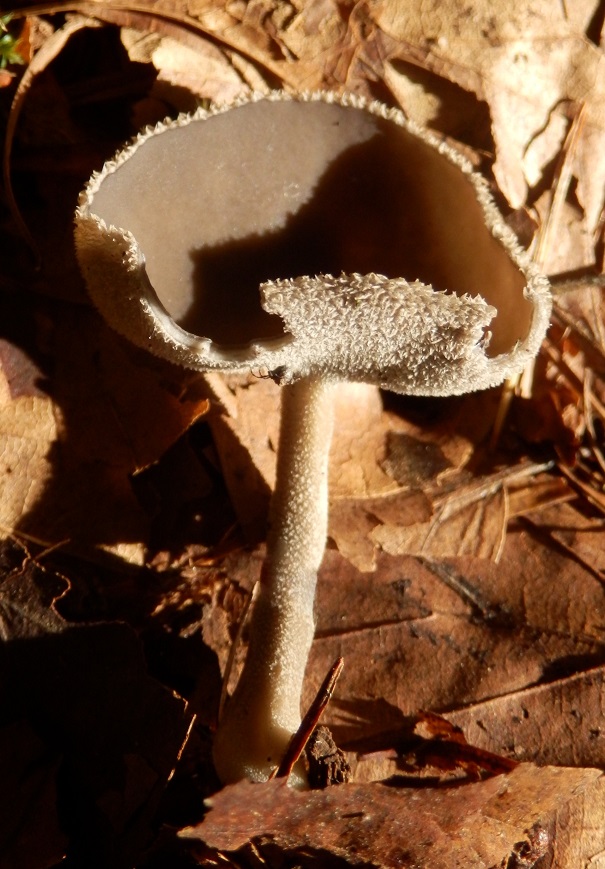
The well-named Felt Saddle, Helvella macropus, found at Whippendell Wood at the end of September (photo by Alison)
Sinuous chanterelle
Chanterelles seem to be having a good year in Herts. As well as the slightly more common Horn of Plenty (Cratellerus cornucopioides), at Northaw Great Wood we found the Sinuous chanterelle Pseudocraterellus sinuosus, which is similar but more frilly (photo by Claudi).
Parasites at Sherrards Park Wood

We had an enjoyable meeting at Sherrards Park Wood on 17 September, where the highlight for me was seeing the 2 parasitic fungi on Russula nigricans (Blackening brittlegill) – Asterophora parasitica (Silky piggyback) and Asterophora lycoperdoides (Powdery piggyback). Alison took a great photo of the latter.
Fenugreek puffball
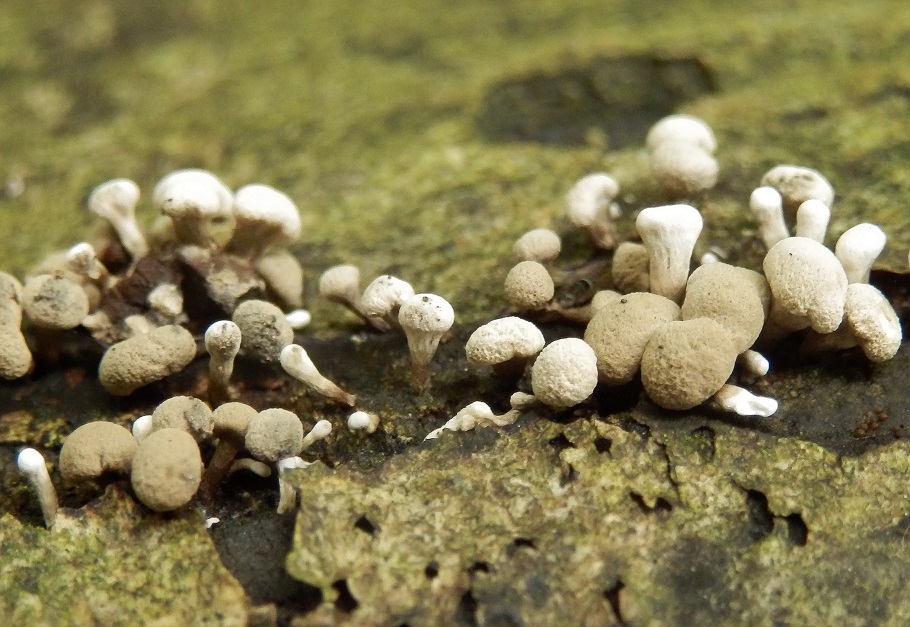
At our meeting at Gobions Wood on 10 September, we found the small but strong-smelling fungus Phleogena faginea (Fenugreek puffball). I have a dried specimen several years old, and it still retains its strong smell.
